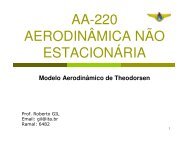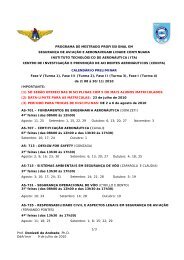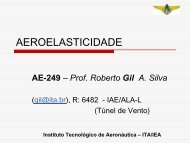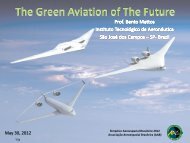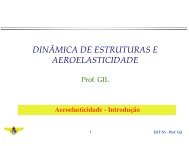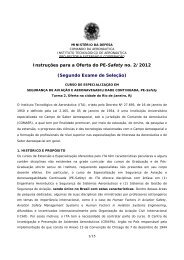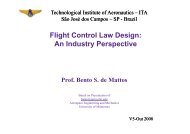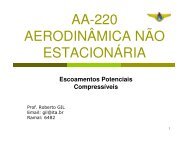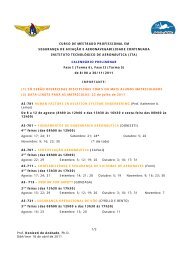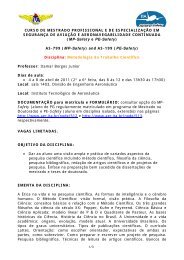Boeing-Stearman Kaydet PT13/17 US Airforce / Navy Primary Trainer
Boeing-Stearman Kaydet PT13/17 US Airforce / Navy Primary Trainer
Boeing-Stearman Kaydet PT13/17 US Airforce / Navy Primary Trainer
You also want an ePaper? Increase the reach of your titles
YUMPU automatically turns print PDFs into web optimized ePapers that Google loves.
Boieng <strong>Stearman</strong> PT-<strong>17</strong> ’<strong>Kaydet</strong>’<br />
Nicknamed the ”Yellow Peril” thanks to its<br />
somewhat tricky ground handling characteristics, the<br />
<strong>Stearman</strong> is one of the most easily recognized aircraft.<br />
Its simple construction, rugged dependability and<br />
nimble handling made the <strong>Stearman</strong> much loved by<br />
those who flew and trained on it. The <strong>Stearman</strong> <strong>Kaydet</strong>,<br />
as it was officially named, was the only American aircraft<br />
used during World War II that was completely<br />
standardized for both Army and <strong>Navy</strong> use as the PT<br />
13D (Army) and N255 (<strong>Navy</strong>). Sold by the thousands<br />
after World War II, the <strong>Stearman</strong> has had a long and<br />
full career as a trainer, crop duster and air show performer.<br />
The famed <strong>Stearman</strong> Model 75 has its roots<br />
in the earlier Model 70, which was chosen in 1934 as<br />
the U.S. <strong>Navy</strong>’s primary trainer. At a time when biplanes<br />
were becoming a thing of the past, the Model<br />
70 offered the fledgling pilot a steady and sturdy steed.<br />
Designed and built in only 60 days, the prototype Model<br />
70 could withstand load factors much higher than were<br />
expected to occur in normal flight training. The U.S.<br />
Army and <strong>Navy</strong> tested the prototype in 1934. At the<br />
conclusion of these tests, the <strong>Navy</strong> ordered the aircraft<br />
while the Army decided to wait for the introduction<br />
of the improved Model 75 appearing in 1936. Over<br />
the next decade, the Armydecided to wait for the introduction<br />
of the improved Model 75 appearing in 1936.<br />
Over the next decade, the Army received nearly 8,500<br />
<strong>Stearman</strong>s in five different variants. The difference<br />
among these versions were the engines fitted; <strong>Kaydet</strong>s<br />
were fitted with Lycoming (PT 13), Continental (PT<br />
<strong>17</strong>) or Jacobs (PT 18) radial engines. The U.S. <strong>Navy</strong><br />
took delivery of their first <strong>Stearman</strong> (called the NS-1 )<br />
in 1934. Powered with the obsolete but readily available<br />
Wright R-790-8 engine, the NS-1 proved its worth<br />
as a primary trainer. The <strong>Navy</strong> purchased several thousand<br />
of an improved model, the N2S. The N2S was<br />
built in five sub variants, each variant being equipped<br />
with a different model engine. Additionally, the Canadian<br />
armed forces took delivery of 300 PT 27s, a winterized<br />
version of the PT <strong>17</strong>.<br />
A later, more powerful version of the <strong>Stearman</strong>,<br />
the Model 76, was purchased by Argentina, Brazil and<br />
the Philippines.<br />
<strong>Stearman</strong> <strong>Kaydet</strong> PT<strong>17</strong> ARF 5



